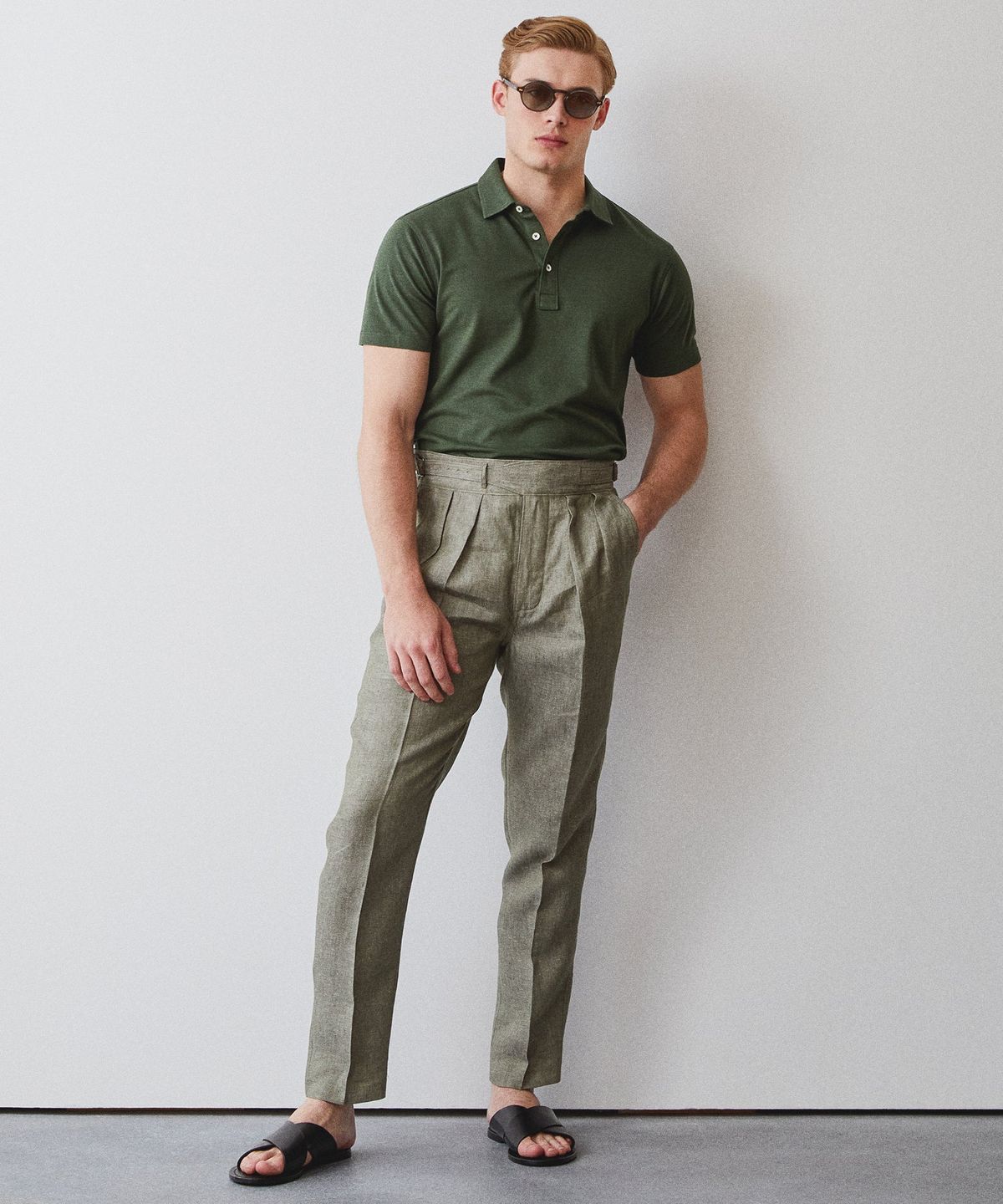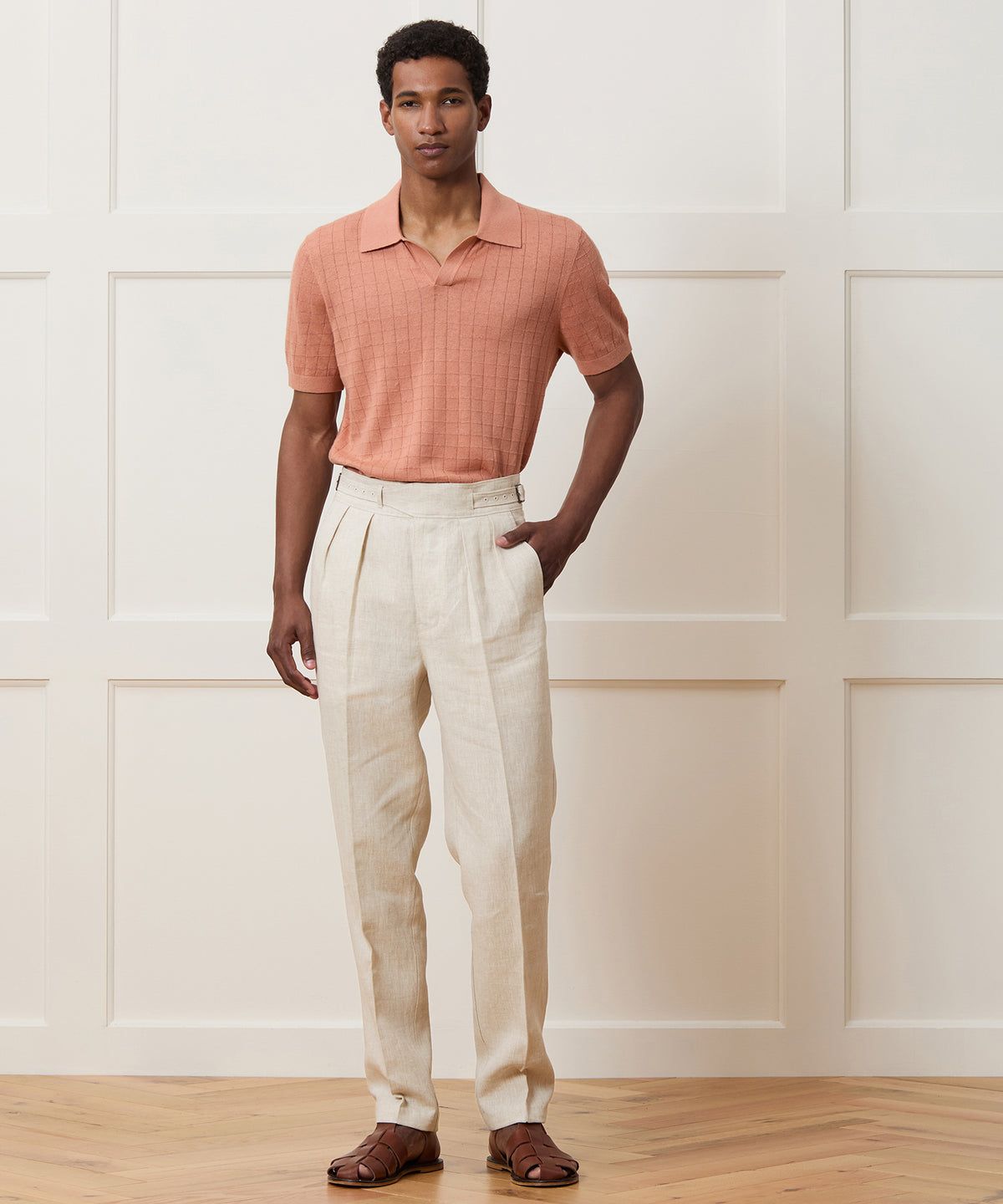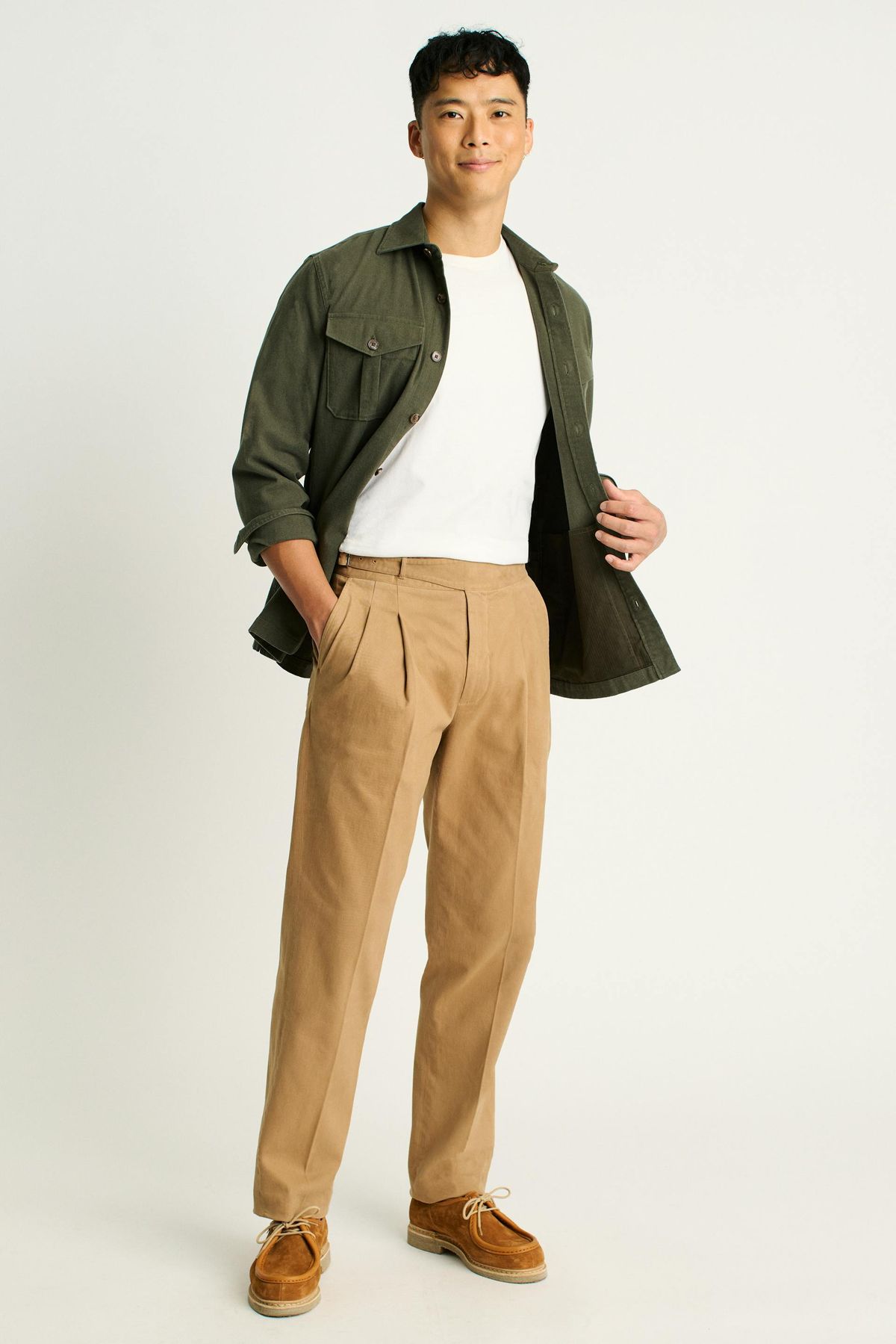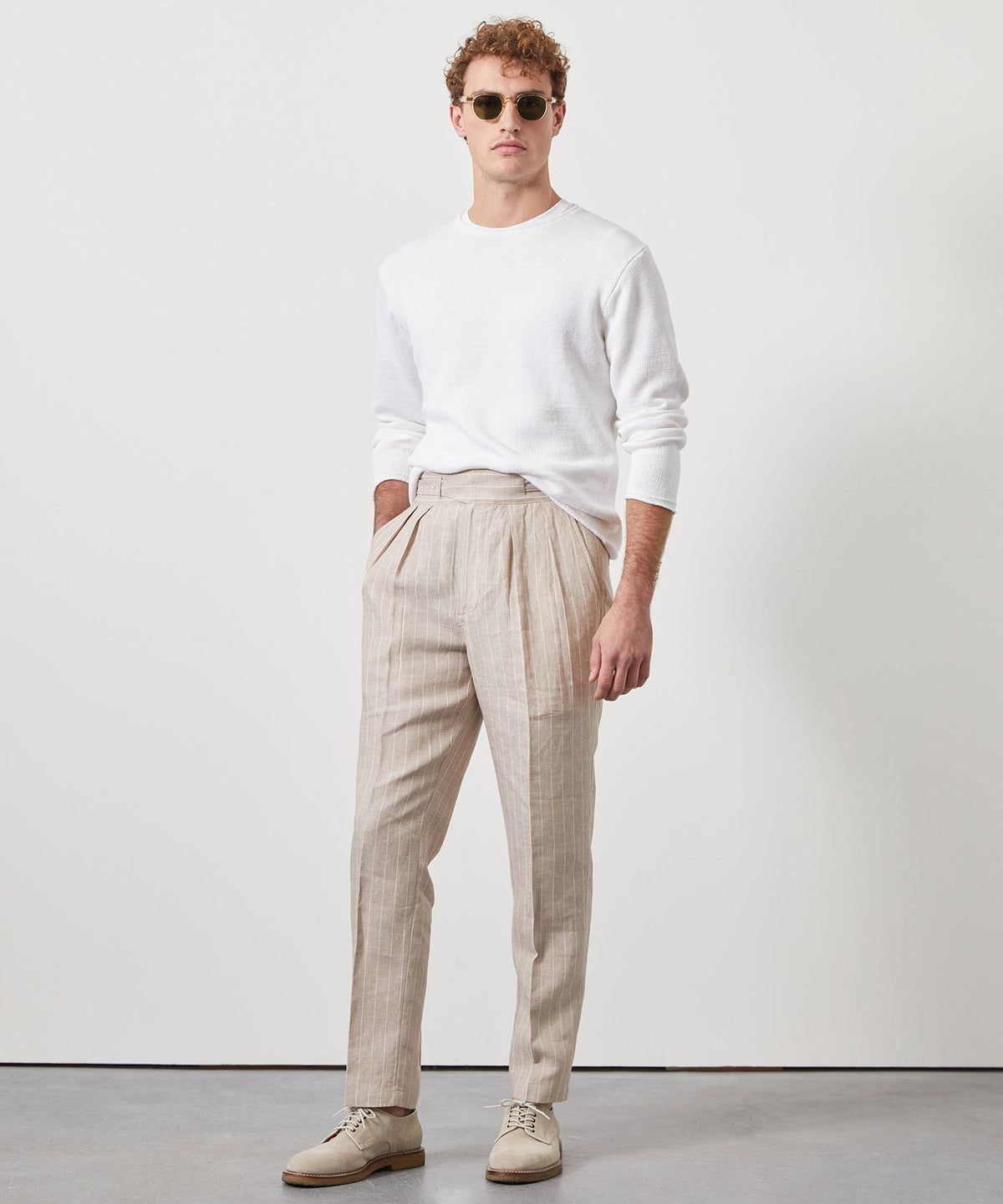Gurkha trousers have marched across battlefields, endured tropical climates, and now stride with quiet authority through the world’s most stylish streets. They are far more than just another pair of pants. They represent a dialogue between past and present, a masterclass in how military utility can be reimagined as sartorial sophistication.
Consider their silhouette: a high, structured waistband that commands attention as it wraps the torso with precision. Twin pleats release fabric in a gentle cascade, while long straps and buckles cinch the waist with the disciplined finesse of an officer adjusting his uniform. The result is a garment that feels bold without shouting, refined without rigidity, and instantly recognizable to anyone fluent in the language of great tailoring.
Exploring the Origins of Gurkha Trousers: Born in the Hills of Nepal
The story of Gurkha trousers begins in the early 19th century, during the Anglo-Nepalese War (1814–1816). The Gurkhas—formidable soldiers from Nepal—earned a reputation for resilience and discipline so remarkable that, once peace was struck, they were swiftly recruited into the British Army. With their valor came not only legend, but also a distinctive uniform that carried their identity forward.
The trousers were, first and foremost, built for survival. Designed to withstand the blistering heat of India and the rugged terrain of Nepal, they combined practicality with ingenuity. A high-rise waist secured the fit without the need for suspenders, while double pleats provided freedom of movement. Long wrap-around straps buckled neatly at the side, eliminating the need for belts that could dig into the body or snag in the chaos of combat. Even the wide waistband had a dual purpose—functioning as a partial cummerbund, it delivered comfort on the field and a subtle sense of ceremony when off it.
Shop editor’s picks
From Battlefield to Boardroom

Like so many military garments—trench coats, bomber jackets, pea coats—Gurkha trousers eventually marched beyond the battlefield and into civilian wardrobes. By the mid-20th century, they had become a quiet uniform for adventurers, foreign correspondents, and worldly men who prized their rugged yet refined character.
The British tailoring influence made the transition seamless. The forward-facing pleats lent themselves to a formal drape, while the absence of belt loops created a cleaner, more sculpted waistline than standard trousers. In sun-drenched climates, they became inseparable from safari suits and lightweight cotton ensembles. Whereas, in cooler regions, they were cut from wool flannels, carrying the same military DNA but with a distinctly urbane edge.
By the time Gurkha trousers entered the collections of luxury tailors and modern menswear houses, they had lost none of their unmistakable details. Instead, those very elements were reimagined—crafted in finer fabrics, executed with sharper precision, and elevated to a symbol of sartorial sophistication.
Anatomy of the Gurkha Trouser

To truly grasp their appeal, you have to pay attention to the details. Start with the waistband: wide, structured, and sitting higher than standard trousers, it carves a strong visual line while subtly elongating the legs. The double-strap closure, crossing neatly over the front and buckling at each side, is more than just a distinctive design. It’s functional too, offering precise waist adjustments without the need for a belt.

Then come the pleats: typically forward-facing, they open toward the fly, creating room to move while maintaining shape. Whether walking, sitting, or bending, the fabric gives without ever looking strained. The cut follows the same philosophy—generous through the thighs for ease, then tapering cleanly toward the hem for a sharp, modern silhouette.
Fabric, meanwhile, sets the mood. In cotton drill or linen, Gurkha trousers feel relaxed, built for summer heat and far-flung travel. Switch to cavalry twill or flannel, and they take on winter gravitas, pairing effortlessly with knitwear, tailoring, and outerwear. That versatility is part of their genius: one design, many expressions.
Wearing Gurkha Trousers Today

If the original design was rooted in military readiness, the modern interpretation is rooted in intention. The high waist all but demands a tucked-in shirt—whether it’s a crisp Oxford, a breezy linen button-down, or a fine-gauge knit polo. This styling choice highlights the distinctive waistband and pleats, allowing the trousers to become the focal point of your look.
Footwear deserves equal consideration. For casual settings, suede loafers or espadrilles complement the relaxed elegance of lightweight Gurkhas. When the occasion calls for sharper dressing, heavier wool versions pair seamlessly with brogues, derbies, or even Chelsea boots, striking a balance between structure and ease.

Color, too, shapes their versatility. Earth tones like khaki, olive, and sand nod directly to their military heritage, grounding the trousers in rugged tradition. Charcoal and navy, on the other hand, lean more formal, effortlessly integrating into tailored wardrobes. The result is a garment that adapts across settings while always retaining its distinct identity.
Why These Trousers Endure

Part of the Gurkha trousers’ enduring appeal lies in its balance of structure and ease. They sit close where it counts (at the waist and hips), yet allow generous movement through the thighs. The result is a silhouette that makes a statement without relying on loud patterns or exaggerated cuts.
Equally important is the heritage woven into every pair. To wear Gurkhas is to connect with a lineage of soldiers, explorers, and style-conscious men who understood that utility and elegance can coexist. In today’s fashion landscape, where trends chase novelty at breakneck speed, Gurkha trousers stand as a reminder that true timelessness is rare. And all the more valuable when you find it.
A Final Word on Quiet Authority

Gurkha trousers aren’t for everyone, and that’s precisely their allure. They demand an eye for detail, a willingness to step outside the ordinary, and a respect for garments with history. Slip into a pair, and you’ll notice the difference immediately: your stance sharpens, your frame feels composed, and your presence carries quiet confidence without effort.
They are more than trousers. They are a bridge between heritage and modern life. For over two centuries, their design has endured—not because of a fleeting trend, but because of an enduring truth. In that truth lies their quiet authority, a reminder that the best style choices are never loud, only lasting.
Featured image: Todd Snyder
For the latest in fashion, lifestyle, and culture, follow us on Instagram @stylerave
Suns Out, Soles Out: The 6 Best Men’s Summer Shoes For Every Occasion
